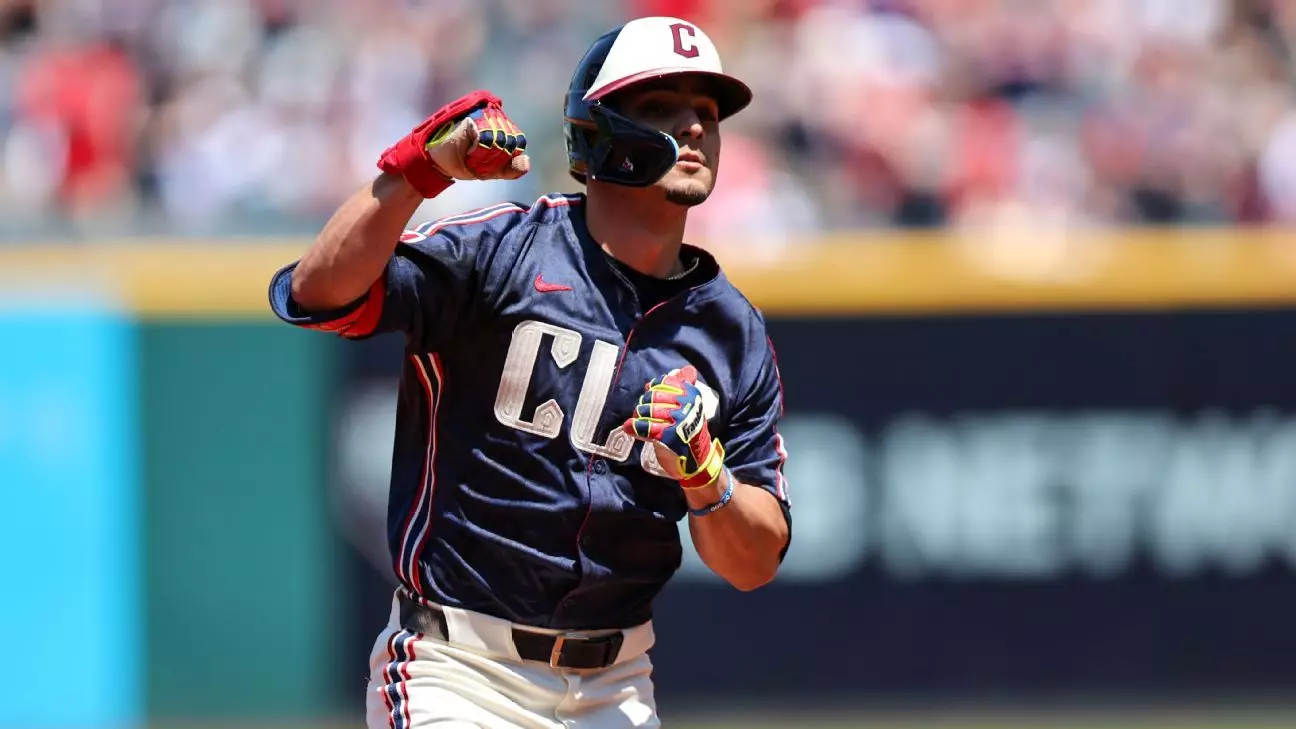In a compelling display of strategic maneuvering within Major League Baseball, the Toronto Blue Jays and Cleveland Guardians executed a notable trade that signifies both teams’ diverging philosophies as they head into the upcoming seasons. This analysis unpacks the intricacies behind this trade, assigns merit to the decisions made, and assesses the implications for both franchises.
The core of the exchange revolves around the Guardians’ decision to part ways with All-Star second baseman Andres Gimenez, whose reputation as a stalwart defender comes with concerns about his offensive capabilities. The Blue Jays received Gimenez, a player tied to a lucrative seven-year contract worth $106.5 million, extending through 2029 with a club option for 2030. Such moves signal Toronto’s intent to rejuvenate a team that faltered significantly last season with a disappointing 74-88 record. The Guardians, on the other hand, acquired promising infielder Spencer Horwitz, only to subsequently trade him to the Pittsburgh Pirates for a trio of young pitching prospects, indicating a potential shift toward long-term rebuilding.
For Cleveland, the analysis of this trade reflects a willingness to reassess its financial allocations, particularly in light of Gimenez’s escalating salary paired with underwhelming offensive production. Despite his defensive accolades, which include three Gold Gloves and 30 stolen bases in the previous season, Gimenez’s average of .252 and slugging percentage of .340 raised caution flags among rival executives. Acquiring players like Nick Mitchell and the prospects Ortiz, Kennedy, and Hartle highlights a strategy to replenish the farm system while parting with a player whose value might not correspond with the Guardians’ resource constraints.
This financial prudence becomes even more relevant considering that players such as first baseman Josh Naylor and outfielder Lane Thomas are also in discussions for potential trades. The landscape of the Guardians reflects a franchise managing limited payroll while attempting to remain competitive, a stark contrast to the broader trends seen in larger market teams.
The Blue Jays’ decision to pursue Gimenez is emblematic of a franchise at a crossroads, eager to avoid a longer rebuild following a rough season. With key players like Vladimir Guerrero Jr. and Bo Bichette staring down free agency in the near future, the Blue Jays find themselves in a race against time to solidify their core while maintaining competitiveness in an unforgiving AL East division. The acquisition of Gimenez, despite the financial ramifications, serves as a testament to Toronto’s ambition to enhance its middle infield and reclaim its standing in the league.
Furthermore, the Blue Jays have been actively engaging in offseason maneuvers, including a high-profile bid for Juan Soto and attempts to court other free agents such as Max Fried. Yet, the failure to secure these stars reveals the inherent risks of operating in a competitive environment where financial resources require judicious management. It’s a fraught balancing act between securing immediate impact players and ensuring long-term sustainability.
Looking forward, the ramifications of this trade are profound for both franchises. The Guardians are likely betting on their young talent to bloom, and if players like Horwitz can develop into significant contributors, this trade could pay dividends in the long run. The success of their newly acquired prospects will be pivotal in determining how successful Cleveland’s strategic shifts will be in upcoming seasons.
For the Blue Jays, the acquisition of Gimenez could either be a masterstroke or a misstep, depending largely on how well they can integrate his defensive prowess and improve his offensive consistency. In the coming years, the Blue Jays need to quickly solidify their direction and vision, particularly with Guerrero and Bichette’s futures hanging in the balance.
This trade encapsulates not just a simple player exchange but a microcosm of larger trends in baseball, where financial prudence, competitive urgency, and the delicate dance of player development all play critical roles. As both teams navigate the evolving landscape of Major League Baseball, the coming season will undoubtedly reveal the efficacy of these strategic decisions.


Leave a Reply